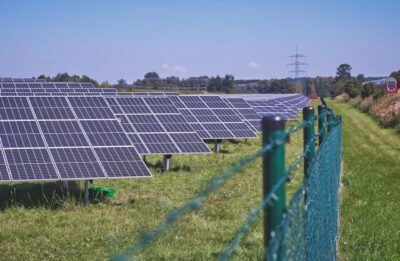The conversation around solar energy often leads straight to off-grid living, but grid-tied solar offers a compelling alternative that’s becoming more popular with homeowners and businesses alike. Unlike off-grid systems that demand complete independence and battery backups, grid-tied solar lets users tap into solar savings without disconnecting from the utility. It’s a smart middle ground—slashing energy costs while enjoying the grid’s reliability. This approach delivers the ideal mix of flexibility, performance, and return on investment for many.
Understanding Grid-Tied Solar at Its Core
A grid-tied solar system is exactly what it sounds like—solar panels connected to the electrical grid. During sunny hours, your system produces electricity that powers your home. When the
panels produce more energy than you need, that excess flows back into the grid, often earning you energy credits through net metering programs. When solar production dips at night or on cloudy days, your system pulls power from the grid. This back-and-forth arrangement eliminates the need for expensive batteries while substantially cutting utility bills.
Lower Bills Without Sacrificing Convenience
One of the biggest misconceptions about solar energy is that to enjoy lower power bills, you have to live off-grid or adopt a complicated system. Grid-tied solar systems challenge that notion, offering immediate savings and long-term financial benefits without sacrificing the convenience of traditional electricity. By generating your power and offsetting usage, you dramatically reduce the amount you need to buy from the utility company, especially during peak daylight hours when rates tend to be higher.
The Real-Time Advantage of Net Metering
Net metering plays a critical role in how grid-tied solar systems deliver savings. When your system generates more power than you consume, that excess energy is fed into the grid, and you receive credits. These credits can offset the power you draw from the grid when your panels aren’t producing—essentially spinning your utility meter backward. Over time, this can lead to significantly lower monthly power bills, or in some cases, near elimination of the bill altogether, depending on local regulations and the size of your system.
No Need for Batteries Means Lower Upfront Costs
Going off-grid usually means investing in battery storage, which can double or even triple the cost of your solar installation. Grid-tied solar systems skip this expensive component. By staying connected to the grid, you allow it to act as your energy backup. This lowers upfront costs and simplifies maintenance, making solar more accessible to a wider range of homeowners and small businesses.
Reliable Performance in Every Season
With a grid-tied system, you’re protected from seasonal variability. In winter months, when daylight is limited or when your usage spikes due to heating or appliance use, the grid is still there to support you. You can produce more than you consume in sunnier months and bank credits. This balance ensures year-round efficiency and savings without managing complex storage systems or backup generators.
Boosting Home Value While Shrinking Bills
Investing in a grid-tied solar system can increase property value, thanks to the long-term energy savings it offers. Prospective buyers recognize the appeal of reduced utility costs and a more sustainable footprint. Unlike aesthetic renovations that may go out of style, solar delivers a practical benefit that pays off for years. The combination of sustainability and economic advantage makes it one of the most attractive upgrades a homeowner can make.
Support from Utility Companies, No Conflict
Despite what some believe, many utility companies support grid-tied solar systems. Utilities benefit when solar reduces strain on the grid during high-demand periods. With programs like smart meters and grid incentives, utility companies and solar users can work together to create a more efficient and balanced energy system. Far from being at odds, this cooperative model supports long-term savings and stability.
Easy Integration and Scalable Solutions
Another major advantage of grid-tied solar is its integration with existing structures. Whether you’re retrofitting a home or designing a system for a commercial building, installation is typically straightforward and scalable based on energy goals and budget. You don’t have to commit to a massive system from day one. You can start small and expand as needed, giving you control over your energy strategy.
A Greener Path Without the Extremes
Not everyone is ready to live off the grid, but most people want to reduce their carbon footprint. Grid-tied solar offers a balanced, eco-conscious alternative. It allows users to tap into renewable energy, reduce fossil fuel consumption, and contribute to a cleaner environment—all without making drastic lifestyle changes. You can make a meaningful environmental impact while enjoying all the modern comforts powered by the grid.
Grid-tied solar delivers the perfect balance between cost savings and energy reliability, allowing you to dramatically cut your power bills without giving up the convenience of being connected to the grid. It’s a smart, sustainable choice that’s easy to integrate, cost-effective, and environmentally responsible. Whether you’re a homeowner or a business, this approach makes solar accessible without the complications of off-grid systems. To explore how you can make the switch and start saving, visit EmpowerEnergySolar.ca.
View the original article and our Inspiration here


Leave a Reply